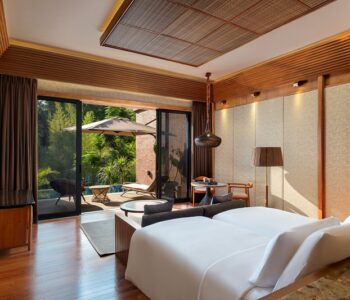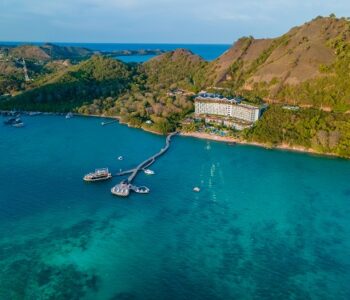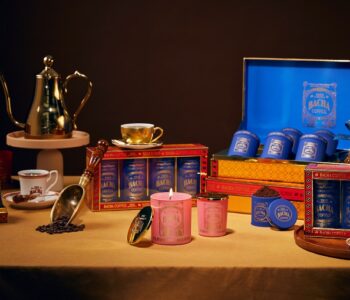To begin to understand the rich history of Indonesia, one must explore some of its most remote islands. The 11 Banda Islands are located in the heart of Banda Sea, the deepest in Indonesia. Despite its remote location, European ships sailed there from the early 1500s in search of “Gold” (Nutmeg). The value of the Dutch East Indies Company (VOC), which controlled these spices, was, in today’s currency, worth more than Apple Corporation today. These islands shaped the history of modern international trade.

Photo courtesy of Coral Triangle Safaris, Nala Rinaldo and Pinneng/NOW!JAKARTA
Almost half century after its first European visit in 1512, the luxury yacht, Sequoia, anchored at the foot of Gunung Api. This volcano is also known as “The Etna of the Banda Sea.” It rises 4,000 metres from the sea floor with a cone 7 km wide, most of which is submerged under water. Several caldera formations are believed to form the Islands of Neira, Banda Besar, Syahrir and Batu Kapal.
Upon arrival, we could see that the islands were covered with evergreen nutmeg trees and large walnut trees. Nutmeg is a fleshy apricot-like fruit. The aromatic spice comes from the nut when it is grated, while the bright red outer covering of the seed is known as mace. Back then, Europeans loaded their ship and returned to Malacca. In 1627, The Dutch “VOC” decided to make Neira, Banda Besar and Ai Island the center of nutmeg plantation.
There is also significant political history to these islands. In February 1936, Sutan Sjahrir and Mohammad Hatta arrived in Bandanaira. Before arriving in Bandanaira, they had spent one year in prison in Java and another year in Boven Digoel, a Dutch concentration camp in New Guinea, which is now West Papua. Soekarno and Hatta declared Indonesia independence from Dutch colonial rule on 17 August, 1945. During the Japanese occupation, Hatta served as a deputy and later Vice President to Soekarno. Sjahrir served as the first Prime Minister of Indonesia from 1945-1947.
Today, we came to witness its old natural beauty. The last recorded eruption in 1988 subsequently covered the reef in lava, however the reef has recovered faster than anyone expected. While under water, we noticed blooming hard coral gardens that are unlike any other within the Coral Triangle. The Coral Triangle contains the richest reef on earth. With only 1.6 per cent of the planet’s oceans, it is home to over 600 species of reefs, 76 per cent of all known coral species in the world, more than 2,000 species of fish, including the whale shark, and 6 of the world’s 7 species of marine turtles. It spans 6 million square kilometers, expanding across 6 countries from the Philippines to Timor-Leste. * At its heart, you will find more than 17,000 islands of the Indonesian archipelago.

We took a leisurely stroll through town and explore the two old forts “Nassau and Belgica”. We strolled along the mysterious paths that lead to interesting places, colonial-era mansions, ageless shop houses, an ancient Chinese temple, or rest on one of the 17th century cannons, which sit abandoned by the roadside. A museum occupies one of Banda’s oldest colonial houses and is well worth visiting. We also visited Hatta house in Neira where he spent most of his time in exile reading books and teaching local inhabitants.
Banda Besar is the largest island in the archipelago. It is covered by dense tropical forest where it has plenty of rainfall to grow Nutmeg, Kenari, and Cinnamon. As we walked on the 313 stairways of Lonthoir Village, it lead us to Kelly Plantation where centuries-old, kenari trees tower protectively over a nutmeg grove. One of Banda’s best views is from Fort of Lonthoir, located high above Lonthoir village. It provides a perfect palm fringed view of Gunung Api with a magical foreground of sapphire shallows water. Fort Hollandia was built in 1624 by sailors, soldiers and Javanese prisoners, who were brought to the island on the orders of governor-general Jan Pietersz Coen.
One week had passed; we were ready to explore other islands. Run Island was full of life. As we walked in the villages, we met a woman drying the nutmeg and cloves under the sun in every corner of the street. We also found the street named “Manhattan”, which was located near the harbour. Run truly is the magical spice island. We visited the Fort Swan and Fort Defence then enjoyed superb snorkeling and diving from the white sand beaches. There is also an Old Dutch nutmeg plantation called El Dorado as well as fragrant clove plantations.
The deep waters that isolate the Banda Islands, including Banda Besar Island make an it ideal place for pelagic or “big fish” sightings. We saw various sharks cruising by including hammerheads, threshers and silvertip sharks. Schools of giant trevally, chevron barracuda and Bluefin trevally hunt here in large schools. As a bonus, eagle rays or “mobula” swam in formation. These dive sites offer great variety to satisfy our sense of adventure, from the volcanic rock with colourful coral at Hatta Island to pelagic at Batu Kapal.
The 11 Banda Islands from Hatta Island in the east to Run Island in the west are some of the most remote, beautiful, and historic islands in the world. Each island is unique and has its own beauty and story and we highly recommend you visit with enough time to take it all in. These famous islands are only accessible by sea and there is no better way to explore them than by a luxurious wooden yacht like Sequoia. Rather than staying one remote resort, which limit your experience, your horizon can change each day you wake up as you travel between these romantic islands. Experience something truly majestic from dark forgotten trails of the nutmeg empire to mystical coral gardens and extraordinary sea life. It is hard not to fall in love with The Banda Islands, where the past and present seems to mysteriously coexist.

How to get here
The Banda Islands are located 110 Nautical Miles away from Ambon, the capital of Moluccas province of Indonesia. You will need to fly to Ambon either from Jakarta, direct flight or from Bali, with a transit in Makassar.
Once you arrive in Ambon, there are two options to get to Banda:
You can take a commercial airline which flies twice per week or a private charter which is available on request. Once you arrive in Banda Neira Airport, it takes 10 minutes to get to Sequoia.
Sail overnight on Sequoia Yacht from Ambon to Banda. On the way, visit the islands of Saparua, Molana, and Nusa Laut Island for beautiful scuba diving and/ or snorkeling, spice plantations & a fort tour, for a day or two depending on your interests and comfort. Once you arrive at Ambon Airport, it takes 30 minutes to get to Sequoia.
Where to stay
Sequoia Yacht
Coral Triangle Safaris provides private luxury scuba Sea Safaris aboard Sequoia Yacht, the most modern and sophisticated yacht operating in the Coral Triangle of Indonesia. Sequoia sails all year in the most biodiverse and pristine coral reefs in the world including Komodo, Alor, Banda, Raja Ampat, and Kaimana. Sequoia is ideal for families or small groups wanting to safely explore the islands less traveled in complete comfort.
With 10 professional crew members including a cruise director, all your needs will be taken care of in a private and intimate setting. You will be as safe and comfortable on Sequoia Yacht as you are in your own home. It is the ultimate luxury. Begin your own journey with Coral Triangle Safaris.
www.coraltrianglesafaris.com
sequoia@coraltrianglesafaris.com
_______
Text by Yessi Maya Sari. This article is originally from paper. Read NOW!Jakarta Magazine July 2018 issue “Health in a Era of Urbanisation”. Available at selected bookstore or SUBSCRIBE here.





